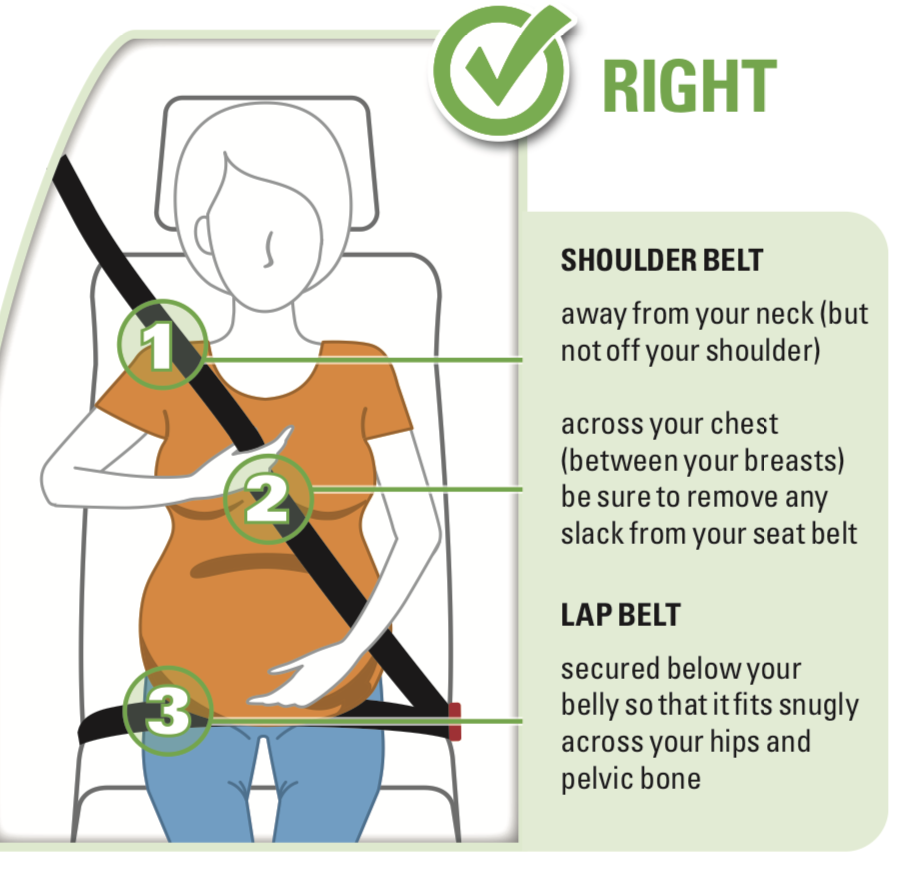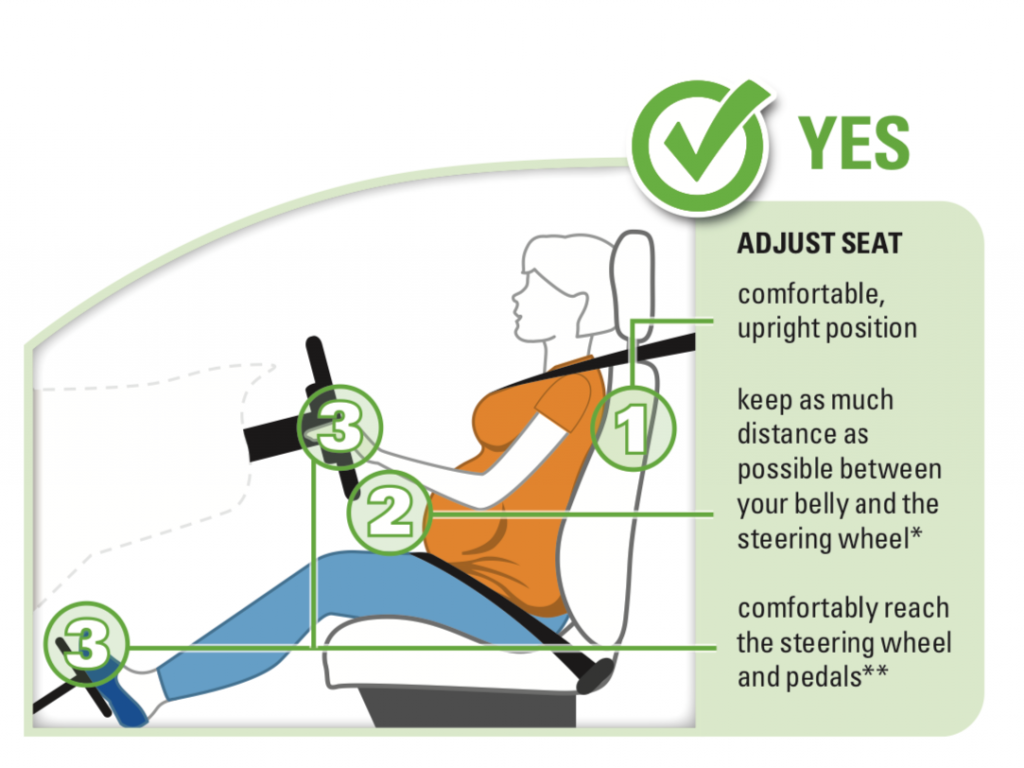
Congratulations on your new family member! We are so excited for you and your family!
It can be overwhelming for a soon to be caregiver to navigate which information is true with regards to your health and preparing for a new baby. It is important to know how to protect your health as well as the baby’s safety. Car safety is critical topic to remember especially for expecting mothers.
There is a lot of information available about seat belts for women who are pregnant. It can be confusing to read several different pieces of information that contain possibly conflicting guidelines. It is always important to get your information from a trusted source. According to the National Highway Traffic Safety Administration, wearing a seat belt when you are pregnant is one of the number one ways you can keep you and your baby safe in the car. You should never ride without a seat belt because it is the best protection for you and your future child.
By placing the seat belt in the correct position across your body, you will receive beneficial features of the seat belt. The shoulder strap should be positioned away from your neck but not off your shoulder. Also, the seat belt should come across your chest diagonally without any additional slack on the belt. The lap belt should rest below your stomach on the hips and pelvic bone.
It is important to notice where your seat belt is resting and avoid place it behind your back or directly on top of your stomach. Also, check to ensure you are able to comfortably reach the steering wheel and pedals. You want to make sure you are comfortable but also keeping enough distance between your stomach and the steering wheel. It is recommended that you avoid having your stomach touch the steering wheel if possible.

|
Even if your car has an air bag, it is recommended that you still use your seat belt because this will help protect you from being ejected from the car during an accident or wreck. Doctors highly recommend leaving your air bag on in addition to wearing your seat belt. The seat belt and air bag will work together to give you the most protection. If you are involved in a wreck, it is important that you contact your healthcare provider immediately if you were a passenger or the driver. In order to keep your newborn safe, it is important to purchase and install a car seat for your child before the baby is born. While it may seem more convenient or safe to hold your child during car rides, children who are not properly restrained are more likely to have significant injuries from a car wreck. The car seat helps keep the baby safe when the car is motion and protects the child if a wreck were to occur. Also, now is a great time to think about purchasing a car seat for your new baby to ensure your baby will also be safe in the vehicle. When selecting a car seat, the biggest thing to consider is choosing a seat that is the right fit for your child, car, and one you can install correctly every time. It is always important to look at the weight and height requirements when buying a seat to make sure it is the correct seat for your child. Majority of seats that are on the market have been crash tested and meet the Federal Motor Vehicle Safety Standard. For more information on car seats, https://www.nhtsa.gov/sites/nhtsa.dot.gov/files/documents/pregnant-seat-belt-use.pdf |